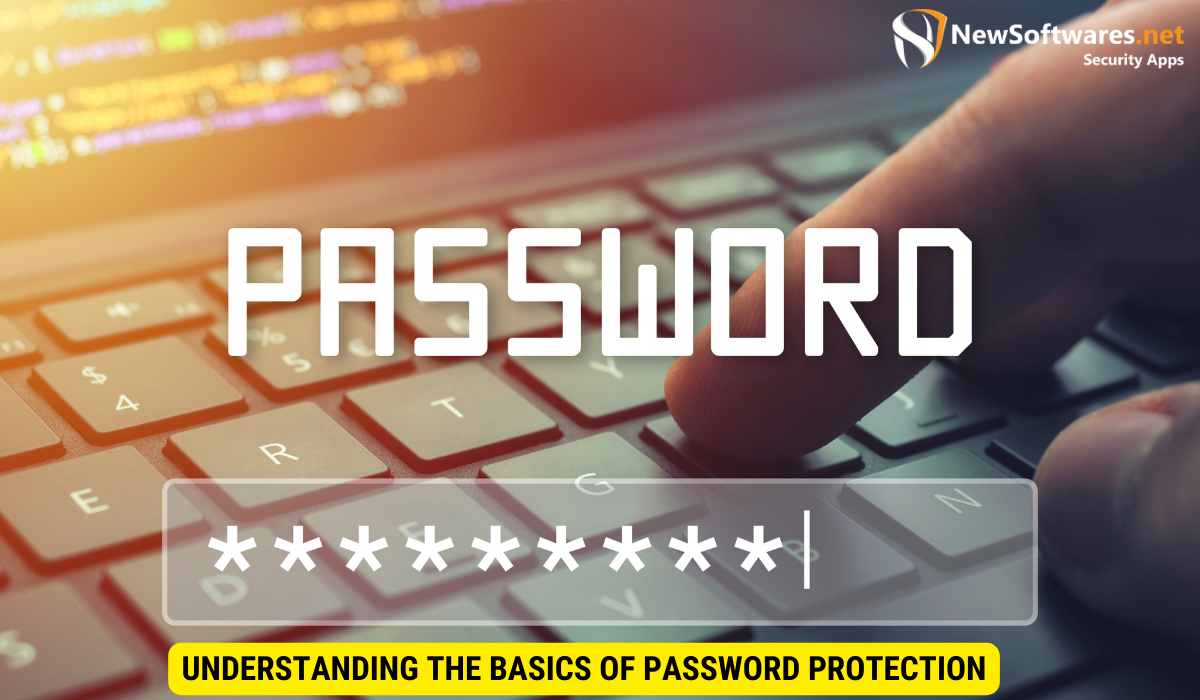A variety of tools and software are available to aid in bypassing password-protected websites. Understanding their capabilities and limitations is key to utilizing them effectively.
As the internet becomes increasingly intertwined with our daily lives, navigating through the multitude of websites has become second nature. However, there are instances where we encounter barriers in the form of password-protected websites. These barriers may hinder us from accessing valuable information or resources. I will explore the basics of password protection, ethical considerations, techniques for bypassing password protection, tools and software available, and ultimately, how to strengthen your own website security.
Understanding the Basics of Password Protection

In order to comprehend how to bypass password protected websites, it is crucial to first understand the fundamentals of password protection. Passwords play a vital role in website security, serving as the first line of defense against unauthorized access.
The use of strong and complex passwords can significantly minimize the risk of breaches. In addition, implementing multi-factor authentication adds an extra layer of security by requiring users to verify their identities through additional means such as SMS codes or biometric data.
The Role of Passwords in Website Security
A password is a secret combination of characters that grants access to specific content, accounts, or functionalities within a website. It acts as a digital lock, safeguarding sensitive information and ensuring that only authorized individuals can access it.
By requiring users to input a password, websites can control access to confidential data, protect user privacy, and prevent malicious activities such as unauthorized data modification, theft, or sabotage.
Common Types of Password Protection
There are several common types of password protection used by websites to safeguard their content:
- Simple Passwords: These are typically short, easy-to-guess passwords that offer minimal security.
- Complex Passwords: Complex passwords are longer, contain a combination of uppercase and lowercase letters, numbers, and special characters.
- Two-Factor Authentication (2FA): This involves an additional layer of security, requiring users to provide a second form of identification, such as a verification code sent via SMS or a fingerprint scan.
- Biometric Authentication: This form of authentication uses unique biological attributes, such as fingerprints or facial recognition, to grant access to websites.
While simple passwords may be easy to remember, they are also easier for hackers to crack. It is recommended to use complex passwords that are at least 12 characters long and include a mix of uppercase and lowercase letters, numbers, and special characters. This significantly increases the difficulty for attackers attempting to guess or crack the password.
Two-factor authentication (2FA) provides an additional layer of protection by requiring users to provide a second form of identification. This can be in the form of a verification code sent to their mobile device via SMS, a fingerprint scan, or even a physical security key. By combining something the user knows (the password) with something they have (the second form of identification), the security of the website is greatly enhanced.
Biometric authentication takes advantage of unique biological attributes to grant access to websites. This technology relies on the fact that each individual has distinct physical characteristics, such as fingerprints or facial features. By scanning and comparing these attributes, websites can verify the user’s identity and grant access accordingly. Biometric authentication provides a high level of security as it is difficult to replicate or forge someone’s unique biological traits.
Ethical Considerations in Bypassing Passwords
While the idea of bypassing password protection may seem appealing in certain scenarios, it is crucial to understand the ethical implications and legal ramifications associated with such actions.
Legal Implications of Password Bypassing
Bypassing password protected websites without proper authorization is generally considered illegal. Unauthorized access may violate the Computer Fraud and Abuse Act (CFAA) or other applicable laws, resulting in civil and criminal charges.
It is essential to respect the boundaries set by website owners and obtain permission before attempting any intrusive actions that could potentially lead to legal consequences.
Ethical Guidelines for Cybersecurity
Ethics play a vital role in the realm of cybersecurity. As aspiring ethical hackers or enthusiasts, it is essential to adhere to ethical guidelines:
- Obtain Proper Authorization: Always seek explicit permission from website owners before attempting to bypass their password protection.
- Act Responsibly: Ensure that any actions taken are solely for the purpose of identifying vulnerabilities and improving website security.
- Respect Privacy: Avoid any unauthorized data disclosure or misuse of information during the process of examining password protection mechanisms.
- Report Vulnerabilities: If potentially harmful vulnerabilities are discovered during the bypassing process, responsibly disclose them to website owners to enable them to take appropriate actions to rectify the issues.
- Continuous Learning: Stay updated with the latest ethical hacking practices, laws, and guidelines to ensure safe and responsible behavior.
Techniques for Bypassing Password Protected Websites

Now that we have established the importance of ethical considerations, let’s explore some techniques that can be employed to bypass password protected websites.
Password Cracking Methods
Password cracking involves attempting to decipher a user’s password by utilizing various strategies:
- Brute Force Attacks: This method involves systematically trying all possible combinations of characters until the correct password is discovered.
- Dictionary Attacks: In this technique, commonly used passwords or words from a dictionary are systematically tested against the password in order to gain access.
- Phishing: Phishing attacks trick users into disclosing their passwords by imitating legitimate websites and persuading users to input their login credentials.
Exploiting Website Vulnerabilities
Websites may have vulnerabilities that can be exploited to bypass password protection:
- SQL Injection: Attackers can exploit poorly sanitized input fields to inject malicious SQL queries, ultimately gaining unauthorized access to the website’s database.
- Session Hijacking: By intercepting a valid user’s session, unauthorized individuals can bypass password protection and gain access to restricted content.
- Man-in-the-Middle (MitM) Attacks: In a MitM attack, the attacker intercepts and alters communication between the user and the website, potentially capturing the user’s login credentials.
Tools and Software for Password Bypassing
A variety of tools and software are available to aid in bypassing password-protected websites. Understanding their capabilities and limitations is key to utilizing them effectively.
Overview of Password Cracking Tools
There are several password cracking tools that can automate the process of attempting to crack passwords:
- John the Ripper: This open-source software is highly versatile and supports multiple cracking modes, such as dictionary attacks and brute force.
- Hashcat: Hashcat is known for its high-speed password cracking capabilities, supporting various algorithms and parallel processing.
- Hydra: Hydra is a powerful network logon cracker that supports various protocols, allowing for efficient password cracking.
Selecting the Right Software for Your Needs
When selecting tools or software for password bypassing, consider the following factors:
- Credentials: Understand the administrator-level credentials required by the tool or software.
- Compatibility: Ensure that the tool is compatible with the target website’s technology stack and security measures.
- Legal Considerations: Research and verify the legality of using specific tools and software in your jurisdiction.
- Up-to-date Databases: Tools that include regularly updated password databases enhance their effectiveness in cracking passwords.
Strengthening Your Own Website Security
While this article has examined bypassing password protection, it is equally important to enhance your own website security to safeguard against unauthorized access.
Best Practices for Password Protection
Implement the following best practices to strengthen your website’s password protection:
- Strong Password Requirements: Enforce the use of complex passwords and multi-factor authentication for user accounts.
- Regular Password Updates: Encourage users to update their passwords periodically to minimize the risk of password breaches.
- Secure Storage: Store passwords using encryption techniques to prevent unauthorized access to the password database.
- Secure Login Process: Implement measures such as CAPTCHA or rate limiting to deter and mitigate brute force attacks.
Regular Updates and Security Checks
Maintain an ongoing commitment to website security by conducting regular updates and security checks:
- Software Updates: Keep all website components and frameworks up to date to address known vulnerabilities.
- Security Audits: Regularly perform security audits to identify and address any weaknesses in your website’s infrastructure.
- Penetration Testing: Employ ethical hackers to simulate real-world attacks and identify potential vulnerabilities in your website’s security.
Frequently Asked Questions (FAQs)
1. Is it legal to bypass password protected websites?
Bypassing password protected websites without proper authorization is generally considered illegal and may result in legal consequences. It is essential to respect the boundaries set by website owners and obtain permission before attempting any intrusive actions.
2. Can password cracking tools be used for illegal activities?
Password cracking tools can be used for both legal and illegal activities. It is important to only use them in ethical and authorized scenarios, such as penetration testing with explicit permission from website owners.
3. How can I enhance the security of my own website?
To enhance the security of your own website, implement strong password requirements, regularly update your software and frameworks, conduct security audits, and perform penetration testing to identify and address any vulnerabilities.
4. What are the risks of bypassing password protected websites?
Bypassing password protected websites without proper authorization can lead to legal consequences, including civil and criminal charges. It is important to understand and adhere to ethical guidelines to avoid potentially harmful actions.
5. What are the ethical guidelines for bypassing password protected websites?
When bypassing password protection, it is crucial to obtain proper authorization, act responsibly, respect privacy, report vulnerabilities, and continuously update your knowledge and skills to ensure safe and ethical behavior in the field of cybersecurity.
Conclusion
In conclusion, bypassing password protected websites requires a deep understanding of web security, ethical considerations, and the appropriate use of tools and techniques. While there are legitimate scenarios where bypassing password protection may be necessary, it is crucial to obtain proper authorization and ensure compliance with legal and ethical guidelines. By implementing best practices and regularly updating your own website security, you can mitigate the risk of unauthorized access and protect your valuable information.
